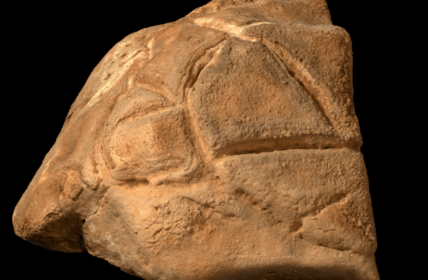A stone turtle, believed to have been worshipped 35,000 years ago, has been discovered in Israel (photo).
Sometimes even well-known archaeological sites hide significant discoveries. The oldest evidence of ritual behavior may have been found in the Manot Cave, located in the Galilee region of Israel. Here, a stone sculpture in the shape of a turtle, dating back approximately 35,000 years, was uncovered.
This sculpture, carved from a dolomite boulder, is believed to have served as a totem or spiritual figure, reports the Jerusalem Post. The cave was inhabited by early humans during the Upper Paleolithic period.
The turtle sculpture was discovered deep within the Manot Cave in a large chamber, eight levels below the cave's entrance. It was previously thought that this area was used solely for everyday activities.

The placement of the sculpture in a secluded niche suggests that it was an object of worship, indicating that early humans engaged in ritual practices. Nearby, ashes from torches were found. The boulder weighs 28 kg, and only its front part is carved.
Omri Barzilai, head of the Paleolab of Material Culture at the University of Haifa, believes this site may represent the oldest evidence of ritual practices in Southwest Asia. The unique acoustics and size of the cave suggest that it could accommodate groups for ceremonial purposes. The turtle motif is linked to various creation myths, where turtles are often depicted as cosmic figures carrying the world on their backs. However, there may be a more mundane explanation—local turtles, due to their slowness, frequently became prey for local prehistoric humans.
Previously, "Telegraph" reported on the use of artificial intelligence to reconstruct long-lost rules of ancient games. Based on a game from Mesopotamia, scientists managed to decipher possible rules of a game from ancient Persia.